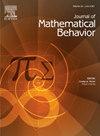A comparative study of the Brearley School and Wadleigh High School in early 20th century New York City
IF 1.7
Q3 EDUCATION & EDUCATIONAL RESEARCH
引用次数: 0
Abstract
This paper offers comparative analysis of mathematics education for girls in two New York City schools during the time from 1890 to 1920, known as the Progressive Era in the United States. During this time, secondary education transitioned from being mostly accessible through private and religious institutions to becoming widely available through public high schools. This expansion led to an unprecedented increase in enrollment and brought several challenges, including the need to adapt curricula to meet the diverse needs of students. Concurrently, changes in labor market demands, particularly in urban areas, underscored the varying educational objectives for girls and boys, driven by the belief that they would have distinct career paths upon graduation. As a result, many educators and policymakers viewed curriculum differentiation as a necessary tool to accommodate students from varied backgrounds. Curriculum differentiation enabled students to choose classes they considered essential, a trend particularly prominent in public schools. In contrast, private schools continued to enroll students who planned to pursue further education after graduation, and therefore, these schools had to maintain their curricular rigor. Wadleigh Public School and Brearley Private School, both girls-only institutions, provide a snapshot of this complexity by highlighting how distinct goals in mathematics education coexisted within the same city at the same time. This paper explores the strengths and challenges faced by both schools, focusing on the purpose of mathematics education, curricular differentiation, and demographic factors affecting girls' enrollment in mathematics classes.
20世纪初纽约市布雷利中学与瓦德利高中的比较研究
本文对1890年至1920年美国进步时代纽约市两所学校的女生数学教育进行了比较分析。在此期间,中等教育从主要通过私立和宗教机构获得转变为通过公立高中广泛获得。这种扩张导致入学人数空前增加,并带来了一些挑战,包括需要调整课程以满足学生的不同需求。同时,劳动力市场需求的变化,特别是在城市地区,强调了女孩和男孩的不同教育目标,因为人们相信他们毕业后将有不同的职业道路。因此,许多教育工作者和政策制定者将课程差异化视为适应不同背景学生的必要工具。课程差异化使学生能够选择他们认为必要的课程,这一趋势在公立学校尤为突出。相比之下,私立学校继续招收那些打算在毕业后继续深造的学生,因此,这些学校必须保持其课程的严谨性。Wadleigh公立学校和Brearley私立学校都是女子学校,通过强调数学教育的不同目标如何在同一城市同时并存,为这种复杂性提供了一个快照。本文探讨了两所学校的优势和面临的挑战,重点研究了数学教育的目的、课程的差异以及影响女生入读数学班的人口因素。
本文章由计算机程序翻译,如有差异,请以英文原文为准。
求助全文
约1分钟内获得全文
求助全文
来源期刊

Journal of Mathematical Behavior
EDUCATION & EDUCATIONAL RESEARCH-
CiteScore
2.70
自引率
17.60%
发文量
69
期刊介绍:
The Journal of Mathematical Behavior solicits original research on the learning and teaching of mathematics. We are interested especially in basic research, research that aims to clarify, in detail and depth, how mathematical ideas develop in learners. Over three decades, our experience confirms a founding premise of this journal: that mathematical thinking, hence mathematics learning as a social enterprise, is special. It is special because mathematics is special, both logically and psychologically. Logically, through the way that mathematical ideas and methods have been built, refined and organized for centuries across a range of cultures; and psychologically, through the variety of ways people today, in many walks of life, make sense of mathematics, develop it, make it their own.
 求助内容:
求助内容: 应助结果提醒方式:
应助结果提醒方式:


